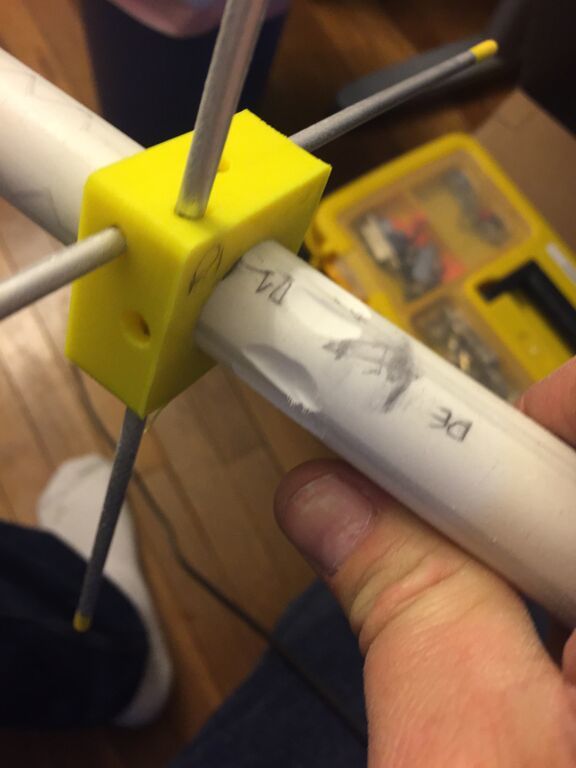Hey Greg,
I made some imperial sized element and radiator holders at the link below (the files used for the pics above). See the link above for the element spacings and measurements. I used 1/2" PVC and 5/32" aluminum TIG rods. That can be a difficult size to find, call your local welding supply company to see if they have it in stock. Amazon sells them in 10lb boxes which is enough to start mass production of antennas…
Notes:
** if you read the commits I mention a #10-24 die on the radiating elements, I ended up going with #8-32 instead.
** I had to grind a bit out of the PVC for the nuts to fit inside the radiator holder:
** As mentioned above in this thread, I lined all of the elements up to be centered in the holders themselves - meaning that it is not a perfect cross and has some offset due to the pvc. Still tested out fine so I didn’t bother fixing this (would need a bit of redesign in the radiator holder)
** I used the same radiator holders and PVC to make a 2m yagi (you can see the full setup in the gallery or hamvention threads). In this setup the TIG rods had to be extended just a bit longer than they are made, I used hollow aluminum tube to join tig extensions. This all works and has a decent SWR, but the 1/2" PVC sags a bit with the weight. Works well for the 440 though. I would like re-do the 2m with aluminum square tubing as the mast, leading to my last point,
** the cross yagi with the aluminum mast and larger, hollow elements that the team from Athens has made is epic. After seeing that through hamvention I am sold on replacing my PVC yagi with it. Commercial grade quality! I’ve got a couple of the pieces resized for imperial aluminum but not everything yet. Here’s the issue though - cost increases considerably. By poking around some sites online the aluminum alone would be in the $80 range. (a comparable commercial antenna goes for about $200) So, do make the PVC cross yagi, just realize it is a gateway drug! 
Files are here: GitHub - cshields/3d-misc: Misc 3d stuff
You can see more pics of the pvc and aluminum mast antennas in this thread: SatNOGS at Hamvention 2015 - #8 by cshields
